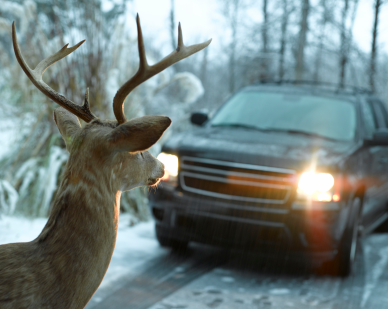What is Comprehensive Coverage?
Defining comprehensive auto insurance, how to best utilize your deductible, auto glass claims, and how to deal with animal strikes.
No state requires full coverage auto insurance. However, most lenders or “lienholders” do. Dropping full coverage while making car payments is not a good idea.
You should also know that full coverage consists of two main components: collision coverage and comprehensive coverage. Collision is pretty straightforward. If your car hits something, it helps you fix it.
Pretty simple. But what is this “comprehensive” business, you might ask?
Comprehensive Coverage Defined
Another name for comprehensive car insurance is “other than collision.” They’re not trying to be cheeky with that (well, we don’t think so, anyway), but that’s effectively what it is. Comprehensive coverage covers a wide variety of mishaps that could happen to your car – what insurance agents refer to as “perils” – which are … not collision.
Perils covered by comprehensive auto insurance typically include theft, vandalism, fire, weather-related damage and “missiles,” which are usually in the form of rocks. In other words, in most policy comprehensive auto insurance is a catch-all for perils which are not collision and which are not specifically excluded in the policy.
Another attractive feature of comprehensive auto insurance is the fact comprehensive claims rarely, if ever, count against you come renewal time. This is in stark contrast to collision claims, which strongly tend to raise your rates unless they’re quite small. In short, don’t be afraid to file a comprehensive claim if conditions warrant.
Know Your Comprehensive Deductible
As with collision coverage, comprehensive car insurance includes a deductible, or agreed amount you pay on any claim before the insurance company kicks in. Comprehensive deductibles options are usually the same as for collision deductibles, ranging from $0 to $1,000. However it’s not necessary to choose the same deductible for both. Most people don’t.
Since comprehensive claims on the whole are much lower dollar amounts than collision claims, many insurance professionals recommend choosing a lower comprehensive deductible. A combination of a $100 comprehensive deductible with a $500 collision deductible is particularly popular.
Comprehensive Glass Coverage
By far the most common comprehensive auto insurance claim involves auto glass repair. In fact, these claims are so common many insurance companies almost consider auto glass coverage a form of full coverage unto itself.
Many companies apply your comprehensive deductible to everything comprehensive except auto glass claims. Instead, auto glass is often covered at a zero deductible, especially if the claim is for repair rather than replacement. Some companies offer this as an option, while others may just include it in your comprehensive coverage. Ask your insurance agent for more information specific to your company.
When Collision is Comprehensive After All
There is one scenario in which hitting something with your vehicle (as in a “collision”) actually warrants a comprehensive claim. Animal strikes typically fall under a policy’s comprehensive section. These can include small animals like birds and jackrabbits all the way up to deer and moose, even livestock.
So if you find yourself accidentally running over your local fauna and damaging your vehicle, know that it’s comprehensive insurance which covers you – so long as you have it.
Trackback from your site.


Reviews (1)
Anonymous
| #
Oh my goodness! Impressive article dude! Thank you
so much.
Reply